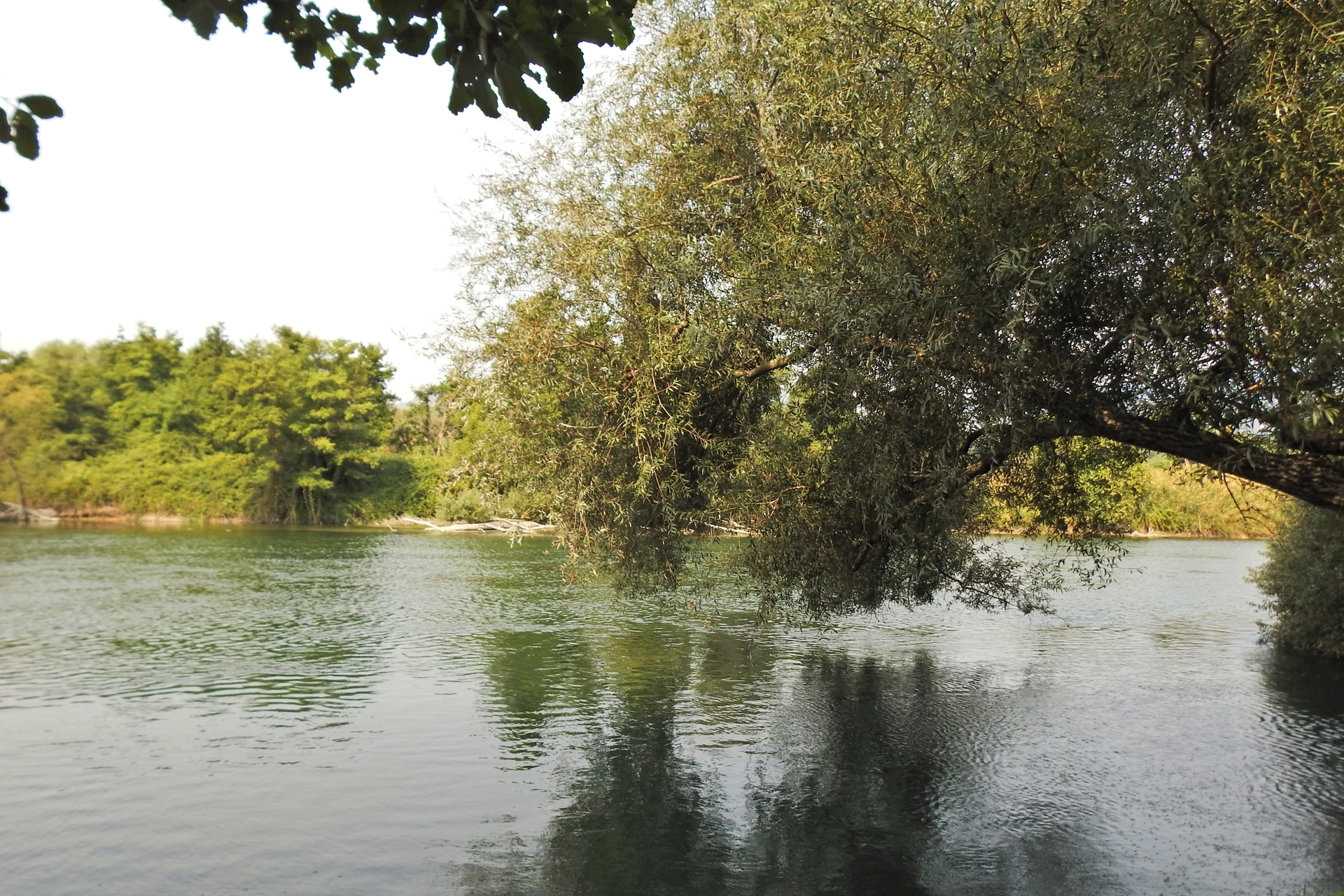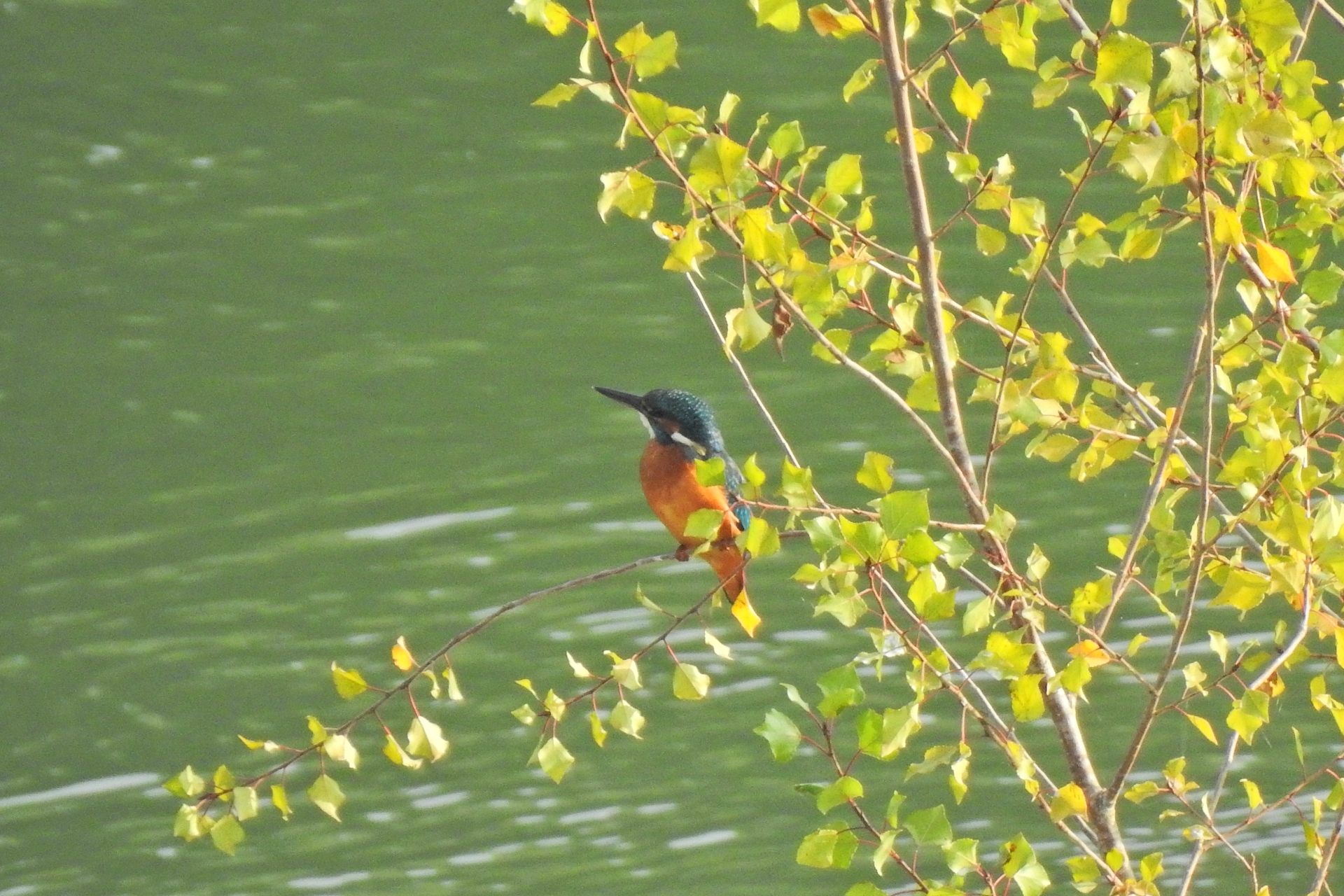In early September, the Italian skies fill with migratory Birds headed towards Africa in what is called “outward” migration. Several species, after spending the nesting season in Europe, prepare to move South, in search of milder climates, crossing our country to reach the other side of the Mediterranean.
Last September we had the pleasure of organizing several birdwatching tours departing from Naples and nature tours in Campania region, giving the opportunity to birding and biodiversity enthusiasts from the United States, Canada and Northern Europe to admire these natural wonders.
Persano WWF Reserve.

We kicked off our activities on September 2nd with a visit to Persano WWF Reserve, located along the Sele River in the Battipaglia plain. One of the most interesting inland wetlands in Campania, it is an important site for birdlife all year round, as well as being known for being one of the territories from which the Eurasian Otter (Lutra lutra) has never completely disappeared.
As soon as we arrive at the first observation huts along the river bank, we are greeted by the presence of numerous herons, including Little Egrets (Egretta garzetta), Grey Herons (Ardea cinerea) and a majestic Great Egret (Ardea alba). On the water, Little Grebes (Tachybaptus ruficollis) are busy feeding their newborn chicks, while several Common Kingfishers (Alcedo atthis) dart through the branches.
Common Kingfisher.

Along the path that runs alongside the river, we are accompanied by the incessant song of the Cetti’s Warbler (Cettia cetti), a shy bird that usually hides in the vegetation but that we managed to see briefly in the undergrowth. Among the willows’ crowns, Eurasian Blue Tits (Cyanistes caeruleus) and a Wood Warbler (Phylloscopus sibilatrix) move agilely. At a certain point, following the flight of a Black-crowned Night Heron (Nycticorax nycticorax), we also spot a Squacco Heron (Ardeola ralloides) hidden on the opposite bank.
The morning continued with the sighting of a young Purple Heron (Ardea purpurea), adding another interesting species to our list. We ended the day observing two typical migrants of this period: the Whinchat (Saxicola rubetra), a small Passerine similar to the Stonechat, and the European Bee-eaters (Merops apiaster), whose unmistakable song attracted our attention, allowing us to see dozens of these colorful Birds busy hunting insects in flight.
Wood Warbler. Photo by Francesco Simonetta.

The following days we focused on the Amalfi Coast area where, in addition to searching for the most iconic species, we had the opportunity to immerse ourselves in one of the most spectacular scenery in the country. On September 3rd, we focused on the area surrounding Mount Molare. Climbing along the steep hairpin bends typical of the region, we spotted several species of nesting Passerines, including European Goldfinches (Carduelis carduelis), European Serins (Serinus serinus) and Spotted Flycatchers (Muscicapa striata). From a lookout, we were accompanied by the song of the Golden Oriole (Oriolus oriolus) and the European Green Woodpecker (Picus viridis), which however remained hidden among the treetops.
Once we reached another side of the area, we took a path that leads to the village of Positano, immersed in the typical Mediterranean scrub. Along the way, a female Eurasian Sparrowhawk (Accipiter nisus) surprises us by darting in front of us, while above us the Common Ravens (Corvus corax), habitual inhabitants of the rocky walls, patrol the sky in search of food.
European Golfinches.

On September 5th we chose to take a relaxing walk at Punta Campanella, the tip of the Sorrento Peninsula. Once again we were able to observe both migratory and nesting species, including numerous Bee-eaters. But the most abundant species is certainly the Sardinian Warbler (Curruca melanocephala), a warbler linked to Mediterranean scrub environments. The males make themselves heard with their song, but spotting them proved to be a difficult task. To console us was the magnificent view of the island of Capri, which seems almost reachable by swimming.
While we are enjoying the breathtaking view, we notice a male Western Marsh Harrier (Circus aeruginosus) sailing south. This species is known for its interesting “differentiated” migratory behavior, in which males begin their migration in late summer, while females and juveniles leave later or remain in the territory for the winter.
With the heat becoming more intense, we stop in the shade of a Turkey Oak to cool off with a freshly made lemonade. It was during this stop that we finally manage to see the Sardinian Warbler hopping between the branches of a nearby myrtle. The day ends beautifully with the sighting of two more birds of prey: a Common Buzzard (Buteo buteo) that lazily circles our heads and, shortly after, a Peregrine Falcon (Falco peregrinus) that passes as quickly as an arrow, giving us just enough time to grab our binoculars to admire it before it disappears behind the ridge.
Sardinian Warbler. Photo by Francesco Simonetta.

So we arrive at September 10th, with a tour focused on the area of Phlegraean Fields and the Caserta coastal wetlands. We start from one of our usual stops in this area: Lake Patria. This large body of water is an important wintering site for several species of water birds and although it is still early to observe the typical wintering waterfowls, in a few minutes we were able to observe several Great Crested Grebes (Podiceps cristatus), Great Cormorants (Phalacrocorax carbo) and Common Sandpipers (Actitis hypoleucos).
We continue towards the Regi Lagni channel mouth. This network of channels, built during the Spanish viceroyalty to reclaim the entire Caserta countryside, is one of the most important hotspots in Campania for waders and other water birds that, attracted by the availability of food, crowd the area in unusual numbers for the region. We first look out onto an internal stretch of the canal, where dozens and dozens of Little Egrets and an African Sacred Ibis (Threskiornis aethiopicus) also hides. This species, typical of Africa, is increasingly rapidly colonizing Europe after having escaped to the south of France and it is now easy to see it in the rice fields and marshes of southern Italy too.
Little Egret- Photo by Andrea Senese.

Unfortunately, it has rained recently and the water level at the mouth is too high to allow the smaller waders to find food. We therefore move inland, to another hotspot characterized by the presence of several bodies of water surrounded by Marsh Samphire (a typical plant of brackish environments), where we contact several waders such as Common Greenshank (Tringa nebularia), Common Redshank (Tringa totanus) and Marsh Sandpiper (Tringa stagnatilis).
To end the day we head to the last of the Phlegraean Lakes, and the only one entirely made up of fresh water: Lake Averno, where Virgil placed the entrance to the underworld, impressed by the steam rising from the surface of the water. It is here that we find several Mediterranean Gulls (Ichthyaetus melanocephalus). This species, typical of the Mediterranean Sea, does not nest here and their presence signals the passage from summer to autumn: the birds have now lost their summer plumage and are preparing for winter, while we enjoy the wonder of autumn migration!
Pettegole. Foto di Andrea Senese.

TOTAL CHECKLIST
- Mallard (Anas platyrhynchos)
- Eurasian Teal (Anas crecca)
- Great Crested Grebe (Podiceps cristatus)
- Little Grebe (Tachybaptus ruficollis)
- Great Cormorant (Phalacrocorax carbo)
- Black-crowned Night Heron (Nycticorax nycticorax)
- Great Egret (Ardea alba)
- Grey Heron (Ardea cinerea)
- Purple Heron (Ardea purpurea)
- Little Egret (Egretta garzetta)
- Squacco Heron (Ardeola ralloides)
- Cattle Egret (Bubulcus ibis)
- African Sacred Ibis (Threskiornis aethiopicus)
- Western Marsh Harrier (Circus aeruginosus)
- Common Buzzard (Buteo buteo)
- Eurasian Sparrowhawk (Accipiter nisus)
- Common Kestrel (Falco tinnunculus)
- Peregrine Falcon (Falco peregrinus)
- Eurasian Coot (Fulica atra)
- Common Moorhen (Gallinula chloropus)
- Common Ringed Plover (Charadrius hiaticula)
- Common Sandpiper (Actitis hypoleucos)
- Marsh Sandpiper (Tringa stagnatilis)
- Common Greenshank (Tringa nebularia)
- Common Redshank (Tringa totanus)
- Yellow-legged Gull (Larus michahellis)
- Mediterranean Gull (Ichthyaetus melanocephalus)
- Black-headed Gull (Chroicocephalus ridibundus)
- Sandwich Tern (Thalasseus sandvicensis)
- Feral Pigeon (Columba livia domestica)
- Wood Pigeon (Columba palumbus)
- Collared Dove (Streptopelia decaocto)
- European Green Woodpecker (Picus viridis)
- Great Spotted Woodpecker (Dendrocopos major)
- Common Kingfisher (Alcedo atthis)
- European Bee-eater (Merops apiaster)
- Barn Swallow (Hirundo rustica)
- Western House Martin (Delichon urbicum)
- Crested Lark (Galerida cristata)
- Whinchat (Saxicola rubetra)
- Spotted Flycatcher (Muscicapa striata)
- Common Blackbird (Turdus merula)
- Zitting Cisticola (Cisticola juncidis)
- Sardinian Warbler (Curruca melanocephala)
- Blackcap (Sylvia atricapilla)
- Cetti’s Warbler (Cettia cetti)
- Wood Warbler (Phylloscopus sibilatrix)
- Common Chiffchaff (Phylloscopus collybita)
- Great Tit (Parus major)
- Eurasian Blue Tit (Cyanistes caeruleus)
- Common Raven (Corvus corax)
- Hooded Crow (Corvus cornix)
- Western Jackdaw (Corvus monedula)
- Eurasian Magpie (Pica pica)
- Eurasian Jay (Garrulus glandarius)
- Common Starling (Sturnus vulgaris)
- Eurasian Golden Oriole (Oriolus oriolus)
- Italian Sparrow (Passer italiae)
- European Goldfinch (Carduelis carduelis)
- European Greenfinch (Fringilla coelebs)
- European Serin (Serinus serinus)
